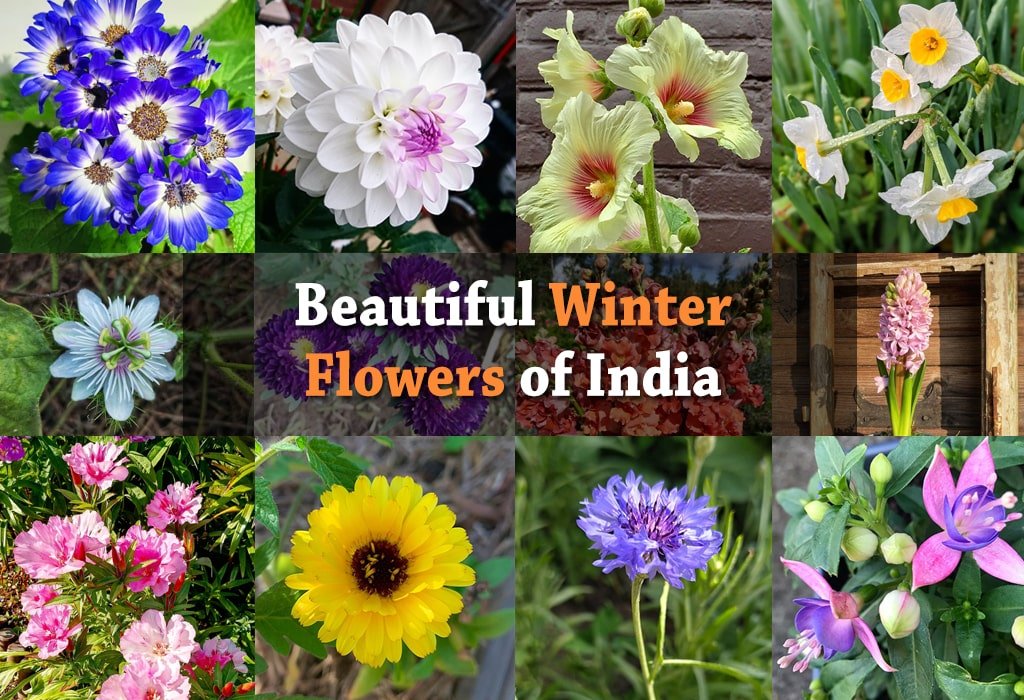Are you a garden-lover? Let’s bring colour into your garden with these 17 unique and beautiful winter flowers in India.
Are you searching for special winter flowers for your house? If you don’t want your garden to become a wreck because of the falling temperature in winters, here are some beautiful and gorgeous winter flowers in India.
1. Calendula
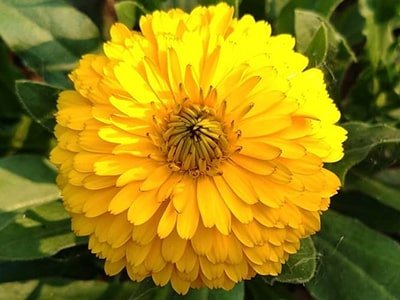 The Calendula are native to southwestern Asia, Western Europe, Macaronesia, and also the Mediterranean. Plants are referred to as marigolds. Their flowers are lovely. The flower wasn’t a bitter meditative herb; however, it was utilized in historic times for headaches, red eyes, fever, and toothaches. Their flowers are in yellow to deep orange colour.
The Calendula are native to southwestern Asia, Western Europe, Macaronesia, and also the Mediterranean. Plants are referred to as marigolds. Their flowers are lovely. The flower wasn’t a bitter meditative herb; however, it was utilized in historic times for headaches, red eyes, fever, and toothaches. Their flowers are in yellow to deep orange colour.
The large, showy, edible flowers and odorous, greyish-green leaves build flowers a favourited for borders, herb gardens, and flower beds. Flower plants are simple to grow and need very little care.
Flower won’t move within the hot summer heat and prefers the cooler temperatures of spring and early fall. Water often tills well established, and once the soil is dry. Flower oil may be natural oil extracted from flowers. It’s usually used as complementary or various treatments. Flower oil has antifungal, medicine, and bactericide properties which may build it helpful in healing wounds. Flower oil is also an alternate remedy to treat varied skin conditions and improve the standard and look of the skin.
2. Petunia
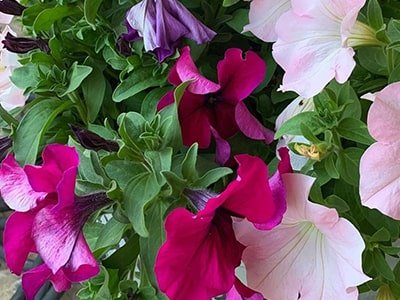 Petunia could be a genus within the family Solanaceae, Tucson Petunioideae. The favoured flower of an equivalent name derived its epithet from the French. These are annual plants that may be seen in varied colours, shapes, and sizes.
Petunia could be a genus within the family Solanaceae, Tucson Petunioideae. The favoured flower of an equivalent name derived its epithet from the French. These are annual plants that may be seen in varied colours, shapes, and sizes.
They’re used as decorative within the homes attributable to their multiple-coloured flowers. Colours for the flower embrace deep blue, deep red, red-orange, lavender, raspberry, light-weight and blue.
Care of petunias includes regular watering and as much daylight as attainable to market multiple blooms. Spreading ground cowl petunias are pickiest regarding water weekly watering ought to be enclosed within the care of petunias. Whereas petunias can grow during a part shaded location, a fuller and other rife bloom is made sun Soil ready fully before planting petunias ought to have well-composted organic matter worked in.
3. Pansy
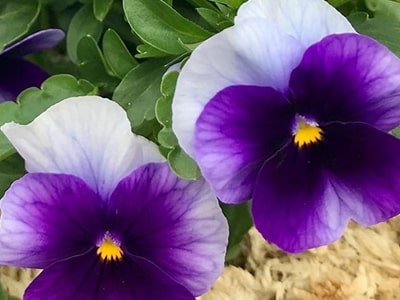 The garden pansy could be a kind of large-flowered hybrid plant cultivated as a garden flower. It’s derived by the union from many species within the section Melanium of the Viola, significantly Heartsease, a wilding of Europe and western Asia referred to as horses. Pansies have simple, overlapping petals and one in all the most comprehensive ranges of bright, pretty colours and patterns. The garden pansy could be a kind of large-flowered hybrid plant cultivated as a garden flower.
The garden pansy could be a kind of large-flowered hybrid plant cultivated as a garden flower. It’s derived by the union from many species within the section Melanium of the Viola, significantly Heartsease, a wilding of Europe and western Asia referred to as horses. Pansies have simple, overlapping petals and one in all the most comprehensive ranges of bright, pretty colours and patterns. The garden pansy could be a kind of large-flowered hybrid plant cultivated as a garden flower.
Pansies are colourful blossoms with “faces”. Cool-weather favourite, pansies are decent for each spring and drop gardens. Pansies will be particular to begin from seed. It’s tons easier to shop for establishing plants from an area nursery. Plus, you’ll get blooms tons sooner. Set pansy plants within the ground once it becomes feasible within the spring. They grow best once soil temperatures square measure between 7°C and 18°C.
Plant this in dumps, humus-rich, well-drained soil. An area the plants are seven to twelve inches apart. They’re going to unfold from nine to twelve inches and grow to be regarding six to nine inches tall.
4. Aster
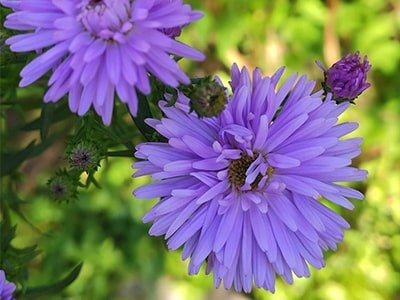 Aster may be a genus of perennial flowering plants within the family Asteraceae. They are available in several sizes and colours. Its restriction has been narrowed, and it currently encompasses around one hundred eighty species, nearly one among that are restricted to Eurasia. Several species once in Aster are now in alternative genera of the tribe Astereae.
Aster may be a genus of perennial flowering plants within the family Asteraceae. They are available in several sizes and colours. Its restriction has been narrowed, and it currently encompasses around one hundred eighty species, nearly one among that are restricted to Eurasia. Several species once in Aster are now in alternative genera of the tribe Astereae.
Asters comprise several species in many different genera of plants. Yet, as dozens of cultivars, except for gardeners, asters are merely those lovely flowers that offer purple or blue daisy-like flowers late within the season. They’ll tolerate exposure to full sun; however, the pot and soil ought to be well-draining.
Asters are daisy-like perennials with star-shaped flower heads that target colour from white to blue to purple—asters like climates with cool, dampish summers—incredibly cool night temperatures. In more sultry environments, plant asters in ranges that dodge the later early afternoon sun Soil got dumped, in any case, well-drained and loamy. Select a site with full to partial sun.
5. Carnation
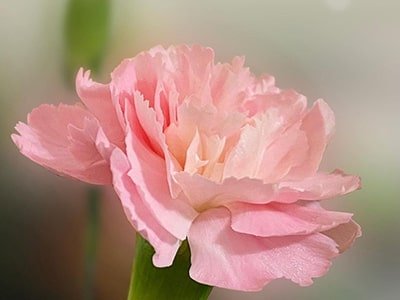 This plant is a species of “Dianthus”. This plant can be generally referred to as the carnation or gillyflower. You’ll be able to grow them perennially. Some varieties are biennial or annual, requiring fertile and well-drained soil—spherical clusters of lovely flowers on prime perfects the planning where you place them.
This plant is a species of “Dianthus”. This plant can be generally referred to as the carnation or gillyflower. You’ll be able to grow them perennially. Some varieties are biennial or annual, requiring fertile and well-drained soil—spherical clusters of lovely flowers on prime perfects the planning where you place them.
Carnations are among the foremost fashionable industrial cut flowers, getting used in floral arrangements, corsages, and boutonnieres.
The leaves are Glaucous grey-green to blue-green, slender, up to fifteen cm long. The flowers are a unit created severally or up to 5 along in an exceeding cyme; they’re around 3–5 cm diameter. The first natural flower colour is bright pinkish-purple; however, cultivars of different colours, together with red, white, yellow, blue, and green, besides some white with coloured stripy variations, are developed. The fragrant, hermaphrodite flowers have a correspondence.
6. Hollyhock
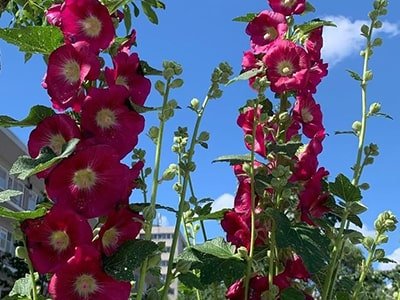 The hollyhock plant is native to Asia and Europe. This flowering plant is from the “Malvaceae”. Hollyhocks are annual, biennial, or perennial plants, sometimes taking an erect, branchless type. The leaf blades are typically compound or toothed and are borne on long petioles.
The hollyhock plant is native to Asia and Europe. This flowering plant is from the “Malvaceae”. Hollyhocks are annual, biennial, or perennial plants, sometimes taking an erect, branchless type. The leaf blades are typically compound or toothed and are borne on long petioles.
Their flowers are blue, pink, purple, red, white, yellow, and even black. The flowers are also solitary or organized in fascicles or racemes. Hollyhocks are well-liked garden decorative plants.
They’re full-grown from seed. This is with red flowers attract hummingbirds and butterflies. Hollyhock seeds outdoors simply in a lower place on the soil’s surface 1-2 weeks before the last frost. Seeds can germinate in 10-14 days. Skinny to 18-36 inches apart once seedlings have up. Water them throughout dry conditions to keep flowers blooming.
7. Antirrhinum
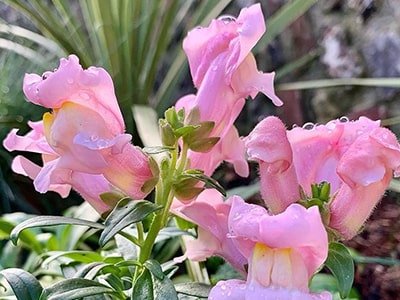 This plant is a genus of plants ordinarily referred to as dragon flowers or snapdragons due to the flowers’ fictitious likeness to the face of a dragon that opens and closes its mouth once laterally squeezed.
This plant is a genus of plants ordinarily referred to as dragon flowers or snapdragons due to the flowers’ fictitious likeness to the face of a dragon that opens and closes its mouth once laterally squeezed.
Snapdragons are tall plants and blossoms in an exceeding variation of colours. In Spain, wherever snapdragons grow wild, these flower colours show a stimulating pattern. They’re native to rocky areas of Europe.
The flowers are annular, bilaterally symmetrical, and typically giant with a closed, lipped mouth that excludes most insects; however, they will be forced open by robust bees, the most pollinators. Snapdragons bloom best in well-drained, moist soil, in cool late-spring or early-summer temperatures. However, they’ll tolerate lightweight shade; however, they bloom far better fully sun. Antirrhinums are cheerful annual plants, absolute to brighten up borders and containers.
8. Clarkia
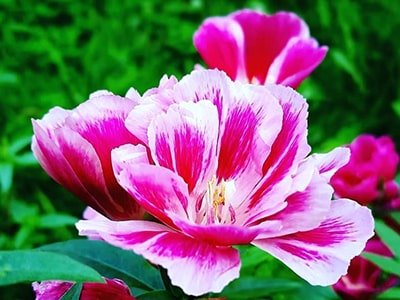 Clarkia may be a genus among the flowering plant Onagraceae. They’re native to western North America. Clarkia are usually annual herbs, growing either prostrate or erect to a height of but two meters. Their flowers have four sepals and 4 petals, typically white, pink, or red, and generally are noticed or patterned.
Clarkia may be a genus among the flowering plant Onagraceae. They’re native to western North America. Clarkia are usually annual herbs, growing either prostrate or erect to a height of but two meters. Their flowers have four sepals and 4 petals, typically white, pink, or red, and generally are noticed or patterned.
Their fruit is elongated, cylindrical pods, typically 4-grooved or 8-grooved, and once mature, they hold many tiny, cube-shaped seeds—Plant Clarkia in excellent, moist, well-drained soil. Clarkia wildflowers want a location with full sun or partial shade. Water frequently till the plants are established.
9. Dahlia
 This plant is a member of the Asteraceae family of dicotyledonous plants. The flower may be a genus of bushy, tuberous, nonwoody perennial plants native to Mexico and Central America. Dahlias love damps, moderate climates.
This plant is a member of the Asteraceae family of dicotyledonous plants. The flower may be a genus of bushy, tuberous, nonwoody perennial plants native to Mexico and Central America. Dahlias love damps, moderate climates.
Flower forms are variable, with one head per stem. These will be as tiny as five cm. Dahlias are perennial plants with stalk roots, though’ they’re grown up as annuals in some regions with cold winters, whereas some have herbaceous stems.
Dahlias grow other blooms with 6 six hours of direct daylight. They love the morning daylight best. You do not need to water them at hand. That way, you merely get water a handful of inches down, not wherever the roots are. Although they will survive the winters, these plants need constant care and pruning to avoid overwintering.
10. Buttercup
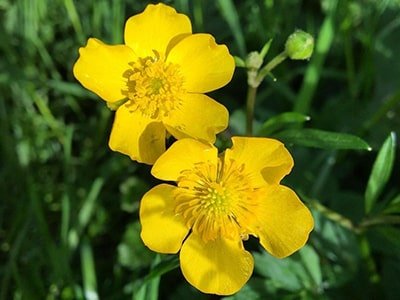 This plant is a flowering plant within the family. Buttercups sometimes flowers within spring. However, throughout the summer, flowers are also found wherever the plants are growing as timeserving colonizers, as within garden weeds.
This plant is a flowering plant within the family. Buttercups sometimes flowers within spring. However, throughout the summer, flowers are also found wherever the plants are growing as timeserving colonizers, as within garden weeds.
Buttercups are principally perennial, however, often annual or biennial, herbaceous, aquatic, or terrestrial plants, typically with leaves during a rosette at the bottom of the stem.
In several perennial species, runners are sent out that may develop new plants with roots and rosettes at the distanced nodes. The hermaphrodite flowers are single during an inflorescence, sometimes with 5 principally inexperienced sepals typically 5 yellow, green or white petals flushed with red, purple, or pink. The colourful, flowers of those plants look surreal, beyond question, lighting up the areas wherever they’re placed.
11. Daffodils
 This flower is typically known as Nargis in India. Narcissus flowers also are known as because the wild narcissus or Lent lilies. This is frequently a class of dominant spring-blooming perpetual plants of the “amaryllis” family.
This flower is typically known as Nargis in India. Narcissus flowers also are known as because the wild narcissus or Lent lilies. This is frequently a class of dominant spring-blooming perpetual plants of the “amaryllis” family.
Its conspicuous flowers with six petal-like tepals head by a cup trumpet-shaped corona. The flowers are typically white or yellow conjointly orange or pink in garden varieties, with either uniform or contraceptive coloured tepals.
There are many completely different flower designs with trumpets, doubles, split cups, large cups, and jonquils. Planting an associate assortment of various styles of daffodils can offer you four to six weeks of gorgeous, carefree flowers each spring. It needs well-draining soil, slightly acidic in pH, and a sunny place. Moreover, this plant needs pruning if the leaves begin to show yellow. Mulching for this plant is way favoured.
12. Hyacinth
 They are sweet-smelling flowering plants within the family Asparagaceae, taxonomic category Scilloideae. Hyacinth bulbs square measure planted within the fall and bloom especially within the spring.
They are sweet-smelling flowering plants within the family Asparagaceae, taxonomic category Scilloideae. Hyacinth bulbs square measure planted within the fall and bloom especially within the spring.
These convex sweet-smelling bulbs are available in a spread of shades, requiring colder temperatures and full sun to grow. Hyacinths are available in a distance of colours—from bright pink to a soft blue.
Grow it in well-drained, moderately fertile soil in sun or partial shade. Before planting, loosen the dirt and add compost or organic for fertility. Plant this four inches deep and a minimum of three inches apart. The cragged regions like Jammu and Kashmir, Uttarakhand, or Himachal Pradesh can build a suitable abode for India.
13. Fuschia
 Fuchsia may be a genus of flowering plants that consist primarily of shrubs or tiny trees. There are currently many sorts with petals that swirl and twist to even other attention-grabbing shapes and colour mixtures.
Fuchsia may be a genus of flowering plants that consist primarily of shrubs or tiny trees. There are currently many sorts with petals that swirl and twist to even other attention-grabbing shapes and colour mixtures.
These Flowers are in pink, dark pink, and purple colour. Most fuchsias are shrubs from 0.2 to four m tall, and It prefers colder climates and well-drained soil. Caring for Fuchsia is often a complex business; however, doing it right can offer moving results.
This is native to South America. This plant might not be able to resist cooling temperatures. This flower can facilitate guarding the crown of the plant throughout the cold winter weather. Fuchsias flowers are splendidly versatile can, with happiness, grow in the sun or partial shade in any fertile, moist, well-drained soil.
14. Cineraria
 Cineraria may be a genus of flowering plants within the sunflower family. This is often native primarily to the southern continent. The genus includes non-woody plants and tiny subshrubs. Cineraria is an annual phanerogam that comes in very stylized colours. The flower is compact, daisy-like, or star-formed. They’re of good colour.
Cineraria may be a genus of flowering plants within the sunflower family. This is often native primarily to the southern continent. The genus includes non-woody plants and tiny subshrubs. Cineraria is an annual phanerogam that comes in very stylized colours. The flower is compact, daisy-like, or star-formed. They’re of good colour.
Cineraria plants completely sprout blossoms see the same as daisies, single or copies, colours all told update blue, ruddy, white, pink and violet. This flower will grow in cold temperatures; however, it wants shade. It’ll not be ready to stand up to freezing temperatures. Cineraria plants are fragile perennial plants, so that they are principally used as outside annuals or indoor gift plants. The northern plain regions in India are promising to bring out the simplest of this plant.
15. Cornflower
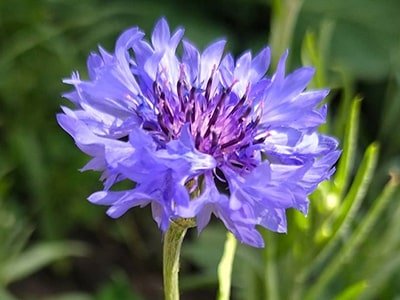 Cornflower is usually referred to as a flower. They’re an annual seed plant within the Asteraceae. They’ll develop sturdy roots throughout the cooler months, permitting them to make larger plants – spring-sown cornflowers can reach up to 90cm; however, autumn-sown plants grow to 1-1.5m and flower six weeks earlier. Cornflowers grow and flower best in sunny positions.
Cornflower is usually referred to as a flower. They’re an annual seed plant within the Asteraceae. They’ll develop sturdy roots throughout the cooler months, permitting them to make larger plants – spring-sown cornflowers can reach up to 90cm; however, autumn-sown plants grow to 1-1.5m and flower six weeks earlier. Cornflowers grow and flower best in sunny positions.
They have fertile soil enriched with legion organic matter, which holds lots of wet in the spring and summer and does not dry out or become waterlogged. Plants tend to grow upright instead of unfolding. Cornflower is an herb. The dried flowers won’t build medication. Individuals take cornflower tea to treat fever, constipation, water retention, and chest congestion.
16. Winter Jasmine
 The winter jasmine could be a slender, deciduous bush native to China. Winter jasmine could be a Chinese species with solitary yellow flowers, is employed as a canopy plant on hillsides. The flowers have four sepals, four petals, 2 stamens, and 2 fused carpels that type one superior ovary.
The winter jasmine could be a slender, deciduous bush native to China. Winter jasmine could be a Chinese species with solitary yellow flowers, is employed as a canopy plant on hillsides. The flowers have four sepals, four petals, 2 stamens, and 2 fused carpels that type one superior ovary.
The four petals are sometimes joined at the bottom to make a tube. The leaves are opposite one another in the branch except during a few species of the bush.
It is additionally the most beautiful Flowering Plants India that grows in winters. It’s a low-maintenance plant, requiring simply well-drained soil and full sun jasmine is additionally a perennial; thus, you have to fertilize it once the blooming amount is over.
17. Passion Flower

This is a genus of 530 species of flowering plants, the sort genus of the family Passifloraceae. They’re principally tendril-bearing vines, with some being shrubs or trees. It’s pretty simple to keep up the plant with appreciated, lovely flowers. They will be fully grown virtually anyplace, together with much milder areas. Passionflowers have distinctive floral structures. This can be initiated from Central Brazil. You’ll be able to keep the plant indoor and supply it with the spare issue.
To keep your passionflower vines healthy and blooming, plant them full sun to partial shade. In scorching climates, some afternoon shade is appreciated. Passionflowers usually would like a minimum of four total hours of daylight a day, additional cooler temperatures, and a few partial hues within the hottest areas. Passionflower can grow as perennials. Passionflowers ought to tend a deep watering instantly once planting.
Have some questions or suggestions? Use our comments section on this blog! You can feel free to leave a comment or two down below, and we’ll get back to you as soon as possible!
We love reading your messages……

